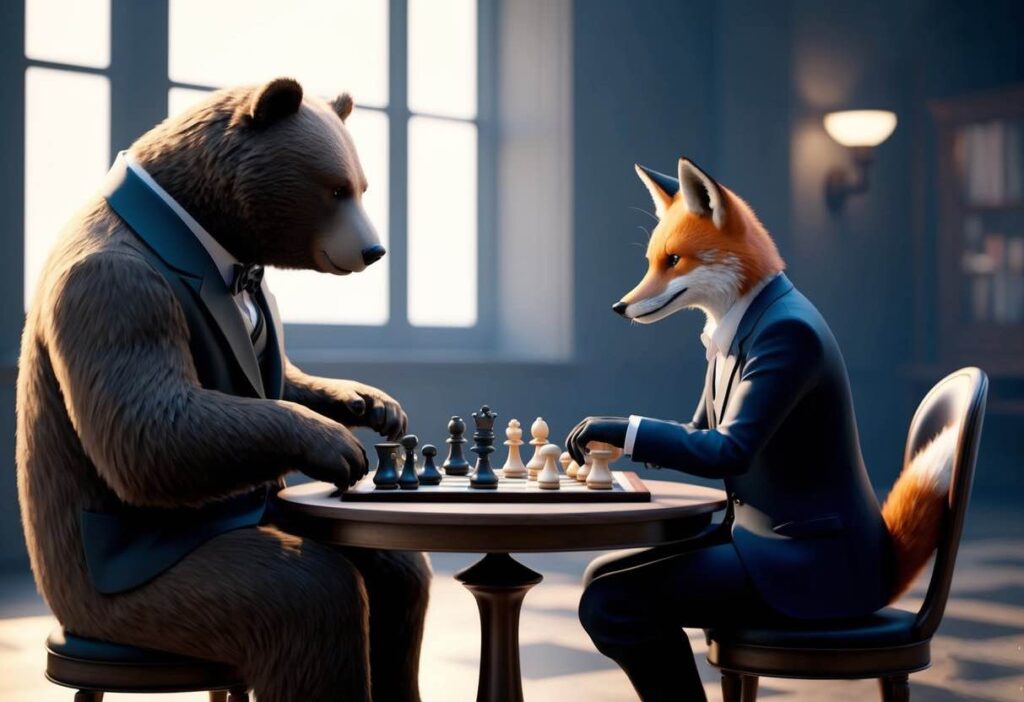People often confuse anthropomorphism vs. personification because they both play a similar role in assigning human characteristics to nonhuman entities. While both of these literary devices breathe life into literature, they serve different purposes and often appear in distinct contexts.
Anthropomorphism endows animals or objects with human-like traits to create characters that act like humans, as seen in many children’s stories where animals speak or behave like people. This technique builds on the concept of literal transformation, giving life to characters that can think, feel, and express emotions just like a person might. Personification, on the other hand, is more abstract. It metaphorically assigns human characteristics to inanimate objects or concepts. Poetry and literature frequently use this device to express ideas or evoke imagery. A classic example might be describing a storm as “angry,” infusing it with human emotion to enhance the reader’s experience. Personification presents the idea of human emotion or action in a way that readers can relate to, ultimately enriching the narrative.Both devices play significant roles in literature by providing unique ways to convey themes and evoke reactions from readers. When authors choose anthropomorphism or personification, they open avenues for interpretation, stimulating deeper expression and connection through their storytelling.
Understanding Anthropomorphism

Derived from the Greek words “anthropos” (human) and “morphe” (form), anthropomorphism involves assigning human traits, emotions, or intentions to nonhuman entities. This practice, rooted in ancient storytelling, make gods and mythical creatures more relatable by giving them human-like qualities. By humanizing these entities, storytellers could convey complex ideas in a way that felt accessible and familiar.
Examples and Usage
Talking animals are a classic example of anthropomorphism, embodying human characteristics to convey moral lessons or societal critiques. Fables and allegories often feature animals engaging in human-like debates and interactions, making complex ideas more approachable.
Through anthropomorphized farm animals, George Orwell’s Animal Farm (1945) allegorizes human political dynamics, leading to a reflection on human behavior via nonhuman characters. Similarly, Aesop’s fables, using anthropomorphism, rely on animals with human traits to communicate ethical lessons that make abstract ideas tangible and engaging for readers of all ages.
Exploring Personification

Personification is another literary device that gives human qualities to nonhuman things, but in a more abstract way. It enhances the richness of descriptive language by infusing feelings and imagery into everyday objects and theoretical ideas. Through this creative expression, personification equips writers to vividly depict everything from nature to emotions.
Writers also use this device to craft more engaging and relatable stories. By representing nonhuman elements as having human-like traits, authors can effectively evoke emotion and create a stronger visual image.
For example, phrases such as “the wind whispered through the trees” or “time marched on” show everyday objects acting like humans. These examples showcase how personification breathes life into ordinary concepts, illustrating them in ways readers can connect with emotionally.
Personification in Poetry
Through personification, poets shape abstract forces into sensory, relatable images. Concepts such as fear or hope take on human qualities, intensifying their emotional impact. Readers are led to consider their own experiences, connecting individual perspectives with broader ideas. Personification, in turn, serves as a means of connecting the personal with the universal in poetry.
Further Reading
Anthropomorphism on Wikipedia
Personification on Wikipedia
What Is Anthropomorphism in Writing? by Parker Yamasaki, Grammarly
A Guide to Personification, With 33 Examples by Lindsay Kramer, Grammarly





